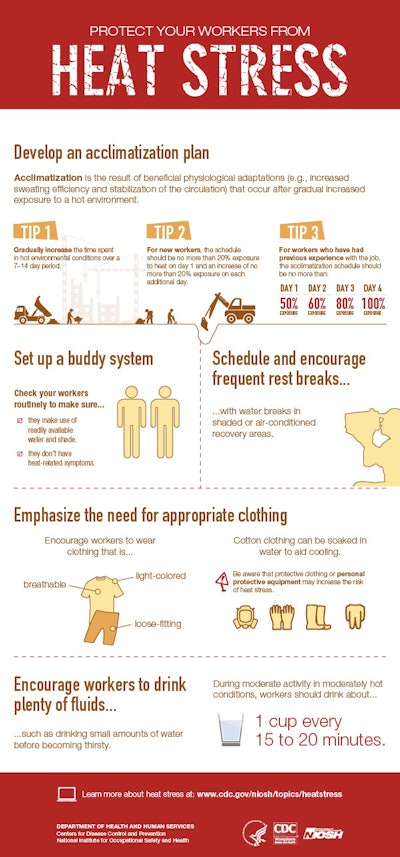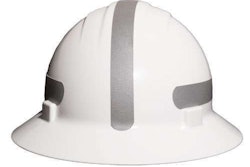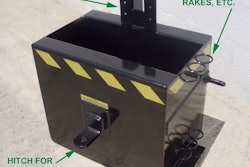
Heat stress is nothing to mess around with, and most landscapers do their best in protecting employees when battling hot temperatures on jobsites.
There are a variety of tips, tricks and helpful hints in protecting employees through hot summer days, including the tip of acclimating to the weather.
But, where should landscapers start in the acclimatization process?
According to the Occupational Safety and Health Administration, workers become gradually acclimatized when exposed to hot conditions for several weeks.
Sticking a new employee out in the heat for a long period of time could be deadly, so putting a plan in place is vital.
1. Increase heat exposure gradually
Workers should be exposed to heat gradually instead of all at once.
According to the Centers for Disease Control and Prevention, new crew members should not be exposed to more than 20 percent of heat exposure on the first day and no more than an increase of 20 percent exposure each additional day.
“Allow workers to get used to hot environments by gradually increasing exposure over at least a five-day work period,” OSHA says. “Begin with 50 percent of the normal workload and time spent in the hot environment and then gradually build up to 100 percent by the fifth day. New workers and those returning from an absence of two weeks or more should have a five-day minimum adjustment period.”
2. Keep a schedule
Hiring new employees doesn’t happen every day, so keeping track of one or two shouldn’t be too difficult. Track day one through day five for new employees with exposure percentages and specific times of day. Additionally, do this for days where the heat index might be exceptionally high, which could be dangerous for even the most experienced employees.
OSHA provides a Heat Safety Tool that allows landscapers to plug in temperature and humidity, which will then calculate the heat index for the day.
“During a sudden heat spike, determine how you will protect your workers from conditions resulting from sudden exposure to heat,” OSHA says.
3. Pick a partner
Creating a buddy system on the jobsite can greatly decrease the chances of an employee from getting heat stress. Crew members can look out for one another on jobsites, help keep track of sun exposure (especially if the crew member is new) and help in emergency situations.
4. Train employees
Landscapers should make foremen and crew members aware of the heat exposure rule. Most companies hold safety-training sessions weekly, so take an hour to teach employees what the schedule (referring to step two) means. Landscapers can make sure all crew members are on the same page, and give foremen the ability to implement the buddy system, as well as follow the heat exposure guidelines.
5. Place the plan in the office
Be sure to keep the new acclimatization plan in visible sight in your office. By making it 100 percent visible to everyone in the workplace, employees will be more apt to follow the guidelines. The plan can be in the form of a bulletproof list, visual demonstration or be the physical schedule of heat exposure. No matter what it is, it will be on the minds of everyone in the office if it’s visually present.












